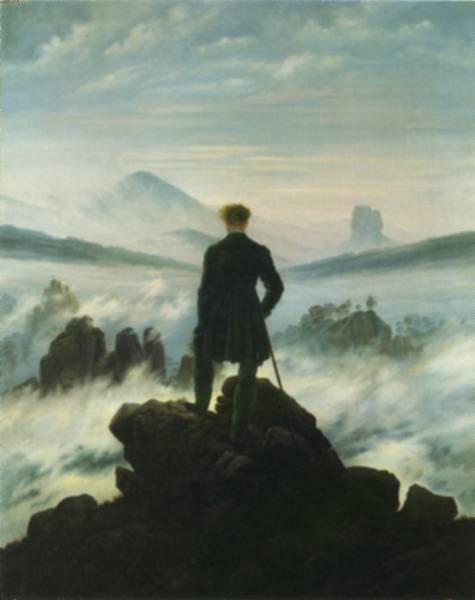Caspar David Friedrich
Caspar David Friedrich (1774-1840)
born Sept 5 1774 get:=74
died May 7 1840 get:=40
German romantic painter Caspar David Friedrich was one of the greatest exponents in European art of the symbolic landscape.
He studied at the Academy in Copenhagen (1794-98), and subsequently settled in Dresden, often traveling to other parts of Germany. Friedrich ‘s landscapes are based entirely on those of northern Germany and are beautiful renderings of trees, hills, harbors, morning mists, and other light effects based on a close observation of nature.
Some of Friedrich ‘s best – known paintings are expressions of a religious mysticism. In 1808 he exhibited one of his most controversial paintings, The Cross in the Mountains (Gemaldegalerie, Dresden), in which — for the first time in Christian art –an altarpiece was conceived in terms of a pure landscape. The cross, viewed obliquely from behind, is an insignificant element in the composition. More important are the dominant rays of the evening sun, which the artist said depicted the setting of the old, pre – Christian world. The mountain symbolizes an immovable faith, while the fir trees are an allegory of hope. Friedrich painted several other important compositions in which crosses dominate a landscape.
Even some of Friedrich ‘s apparently nonsymbolic paintings contain inner meanings, clues to which are provided either by the artist ‘s writings or those of his literary friends. For example, a landscape showing a ruined abbey in the snow, Abbey with Oak Trees (1810; Schloss Charlottenburg, Berlin), can be appreciated on one level as a bleak, winter scene, but the painter also intended the composition to represent both the church shaken by the Reformation and the transitoriness of earthly things.

